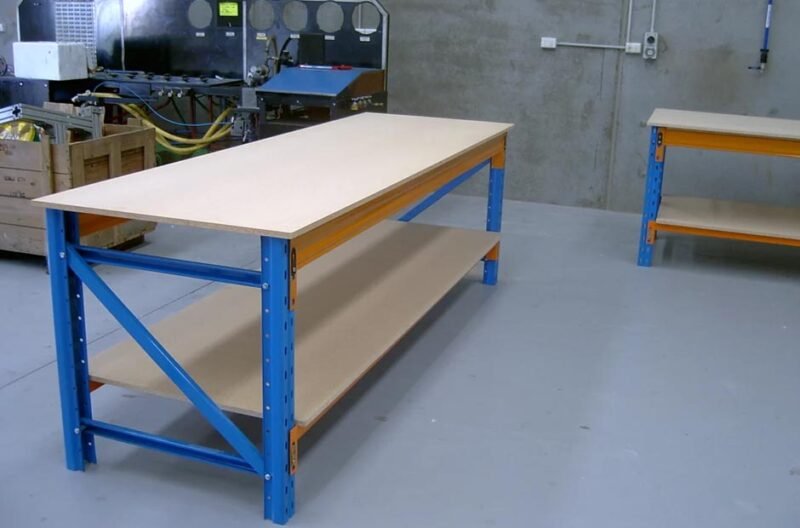
A heavy-duty industrial workbench is a fundamental component of any industrial setting, providing a stable and reliable workspace for workers to carry out their tasks efficiently. Whether it’s in manufacturing plants, laboratories, warehouses, or other industrial environments, choosing a suitable heavy duty work bench can significantly impact productivity and safety. This article explores the top 10 features to consider when selecting one.
Sturdy Construction and Material: The first and most crucial feature to look for is its construction and material. It should be built with high-quality, robust materials that can withstand the rigours of an industrial environment. Typically, it is made from steel or heavy-duty aluminium and offers excellent durability and stability. Welded frames and reinforced legs support heavy loads and prevent wobbling or bending.
Weight Capacity: An efficient workbench should have a high weight capacity to accommodate various tools, equipment, and materials. Assess your specific needs and ensure its weight capacity aligns with the demands of your industrial operations. A sturdy one with sufficient weight capacity will reduce the risk of damage to both the bench and the items being worked on.
Adjustable Height: Ergonomics play a significant role in maintaining worker productivity and comfort. Look for a product with adjustable height capabilities. This feature allows workers to customise the bench’s height to match their individual preferences, reducing strain on the back and promoting better posture during extended periods of work.
Surface Material: The surface material is vital for various tasks and applications. Depending on the industry, you might require a chemical-resistant, non-conductive, or anti-static surface. Common surface materials include stainless steel, laminate, or ESD (Electrostatic Discharge) laminates, each catering to specific needs. Selecting the right surface material ensures longevity and efficiency in its performance.
Storage Options: An effective product should offer ample storage options to keep the workspace organised and clutter-free. Built-in drawers, shelves, and cabinets help workers access tools and materials easily, enhancing productivity and saving valuable time. Choose one that aligns with your storage needs and supports efficient workflow.
Mobility: In dynamic industrial environments where tasks change frequently, having a mobile workbench can be invaluable. Look for products equipped with sturdy casters, allowing easy movement to different areas as needed. Ensure the casters have locking mechanisms to secure them in place when required.
Power and Connectivity: Modern industrial processes often rely on electrical equipment and technology. A product with integrated power outlets and connectivity options, such as USB ports or data ports, can significantly improve productivity and eliminate the need for extension cords. This feature enables seamless integration of devices, ensuring a smooth workflow.
Modularity and Expandability: Versatility is a sought-after trait in any industrial setting. A modular and expandable one provides the flexibility to adapt to changing requirements. Products with interchangeable components or add-on accessories allow you to customise the bench according to your evolving needs without the need for a complete replacement.
Chemical Resistance and Easy Maintenance: They often encounter spills, splatters, and exposure to various chemicals. Opt for one with chemical-resistant surfaces to prevent damage and ensure easy cleanup. Also, choose a product requiring minimal maintenance, saving time and resources in the long run.
Compliance and Safety Features: Look for workbenches that comply with relevant safety standards and regulations. Features like safety guards, anti-tip mechanisms, and rounded edges are essential to protect workers from accidents and injuries.
Conclusion
Investing in the right heavy duty work bench is crucial for optimising productivity, efficiency, and safety in any industrial facility. By considering the ten features mentioned above – sturdy construction, weight capacity, adjustable height, surface material, storage options, mobility, power and connectivity, modularity, chemical resistance, and safety features -, you can make a decision and choose one that best suits your industrial needs. Prioritise durability, functionality, and user-friendliness to ensure it becomes a valuable asset in your industrial workspace.
Author’s Name: Alison









